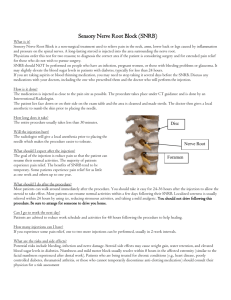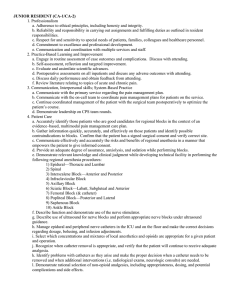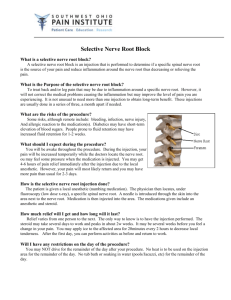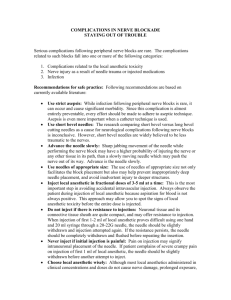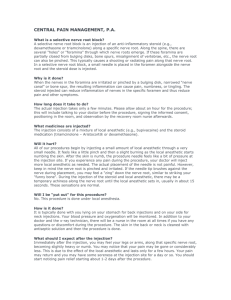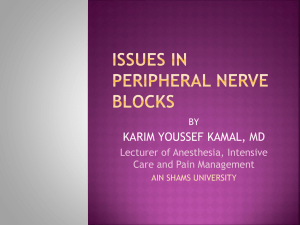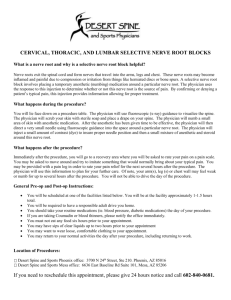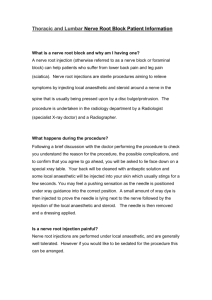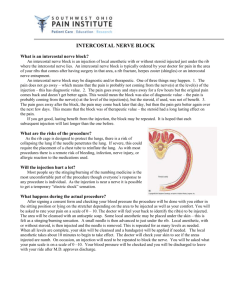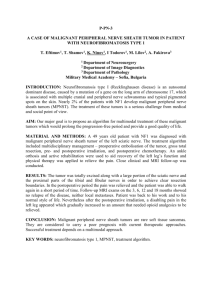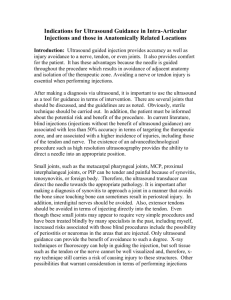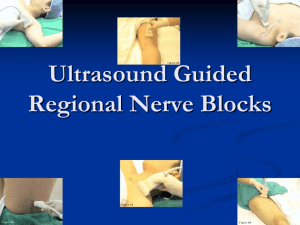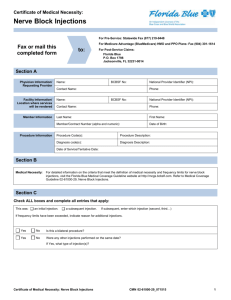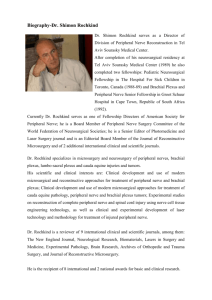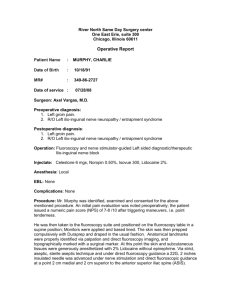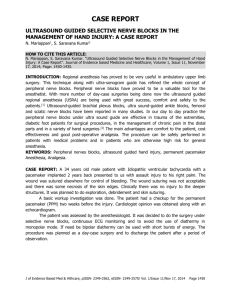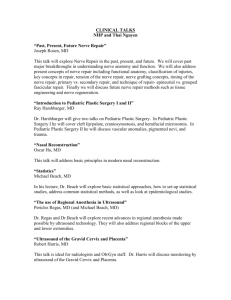Ultrasound and Regional Anesthesia
advertisement
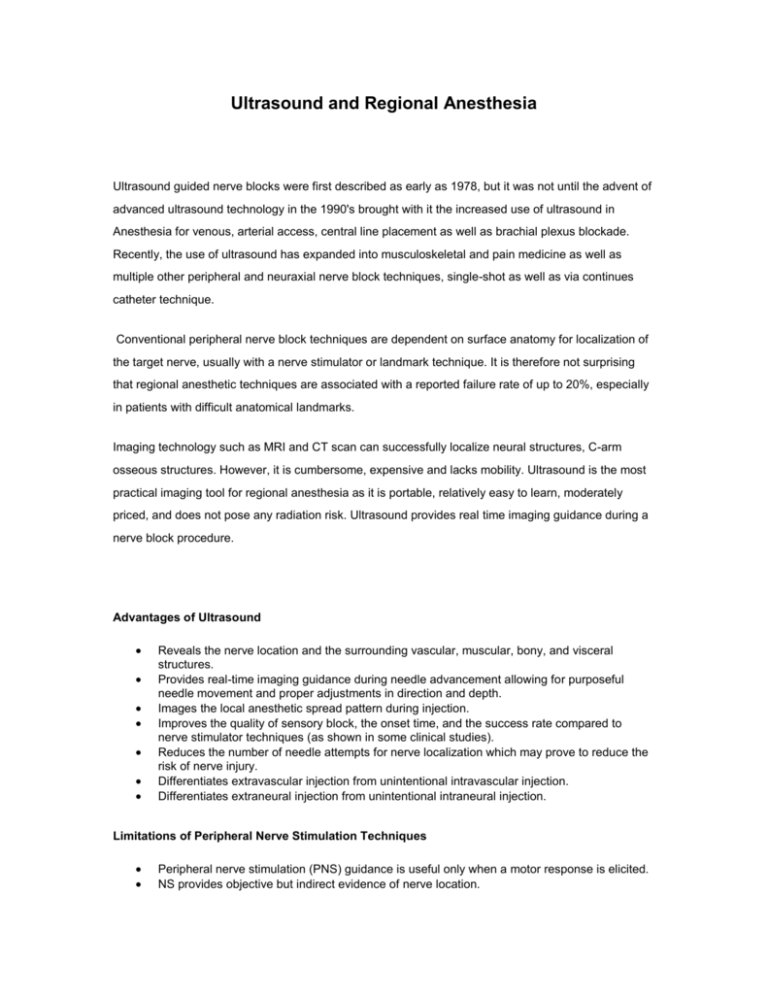
Ultrasound and Regional Anesthesia Ultrasound guided nerve blocks were first described as early as 1978, but it was not until the advent of advanced ultrasound technology in the 1990's brought with it the increased use of ultrasound in Anesthesia for venous, arterial access, central line placement as well as brachial plexus blockade. Recently, the use of ultrasound has expanded into musculoskeletal and pain medicine as well as multiple other peripheral and neuraxial nerve block techniques, single-shot as well as via continues catheter technique. Conventional peripheral nerve block techniques are dependent on surface anatomy for localization of the target nerve, usually with a nerve stimulator or landmark technique. It is therefore not surprising that regional anesthetic techniques are associated with a reported failure rate of up to 20%, especially in patients with difficult anatomical landmarks. Imaging technology such as MRI and CT scan can successfully localize neural structures, C-arm osseous structures. However, it is cumbersome, expensive and lacks mobility. Ultrasound is the most practical imaging tool for regional anesthesia as it is portable, relatively easy to learn, moderately priced, and does not pose any radiation risk. Ultrasound provides real time imaging guidance during a nerve block procedure. Advantages of Ultrasound Reveals the nerve location and the surrounding vascular, muscular, bony, and visceral structures. Provides real-time imaging guidance during needle advancement allowing for purposeful needle movement and proper adjustments in direction and depth. Images the local anesthetic spread pattern during injection. Improves the quality of sensory block, the onset time, and the success rate compared to nerve stimulator techniques (as shown in some clinical studies). Reduces the number of needle attempts for nerve localization which may prove to reduce the risk of nerve injury. Differentiates extravascular injection from unintentional intravascular injection. Differentiates extraneural injection from unintentional intraneural injection. Limitations of Peripheral Nerve Stimulation Techniques Peripheral nerve stimulation (PNS) guidance is useful only when a motor response is elicited. NS provides objective but indirect evidence of nerve location. Evidence of proper needle placement (i.e. motor response) disappears after injection of 1-2 mL of local anesthetic. Motor response achieved at < 0.5 mA does not guarantee a successful or complete block. PNS does not prevent intravascular, intraneural or pleural puncture.

